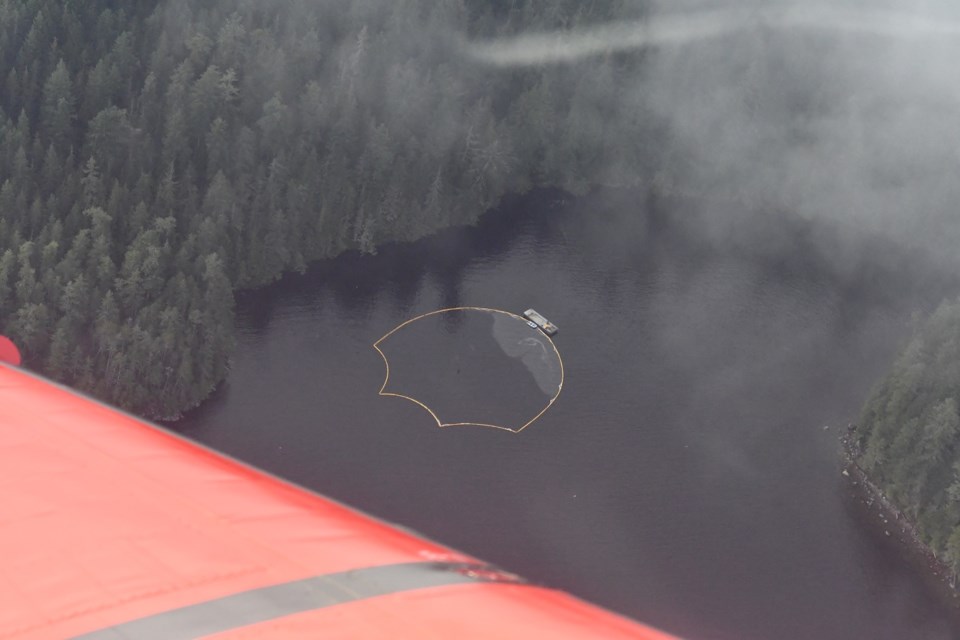Spill response for Sechelt Inlet's latest shipwreck is continuing.
As a National Aerial Surveillance Program (NASP) plane flew over the site of the sunken R.J. Breader on Dec. 13, it reported a silver sheen within the containment boom.
An update from the Canadian Coast Guard on Dec. 19 shares that no sheen was visible outside the boom.
The R.J. Breadner, a decommissioned ferry now privately owned, sank in Sechelt Inlet in early November. Since then, a local contractor hired by the vessel owner checks on and maintains the boom on a daily basis. Using sorbent pads, the contractor removes any recoverable fuel. In the Coast Guard’s update, it said the contractor reports the rate of fuel upwelling continues to decrease.
The R.J. Breadner remains stable in its current position resting on the seafloor and is not considered a hazard to navigation, the Coast Guard said.
On Nov. 27, hired divers conducted an underwater assessment of the sunken boat and removed polysteel lines that were extending from the R.J. Breadner and creating a hazard. They recovered multiple loose containers in the vessel that were actively leaking, including barrels, buckets and jerry cans. The divers also observed the vessel’s disposition and determined it is unlikely to shift during tides or storms. The Coast Guard said it cannot speculate on what an environmental impact might be, and that the containment boom and sorbent pads are successfully managing environmental impacts at this stage.
Along with the vessel owner, the Coast Guard continues to work on the response with Environment and Climate Change Canada (ECCC) and local First Nations. As for what caused the vessel to sink, it is up to the Transportation Safety Board (TSB) to choose whether or not to investigate.
“Ultimately, the responsibility for any vessel lies with the owner. Under Canadian law, owners are responsible for the costs of addressing their problem vessel. This includes any hazard-related costs like cleanup or repairs, and any remediation action taken by the Canadian Coast Guard,” the Coast Guard stated.



